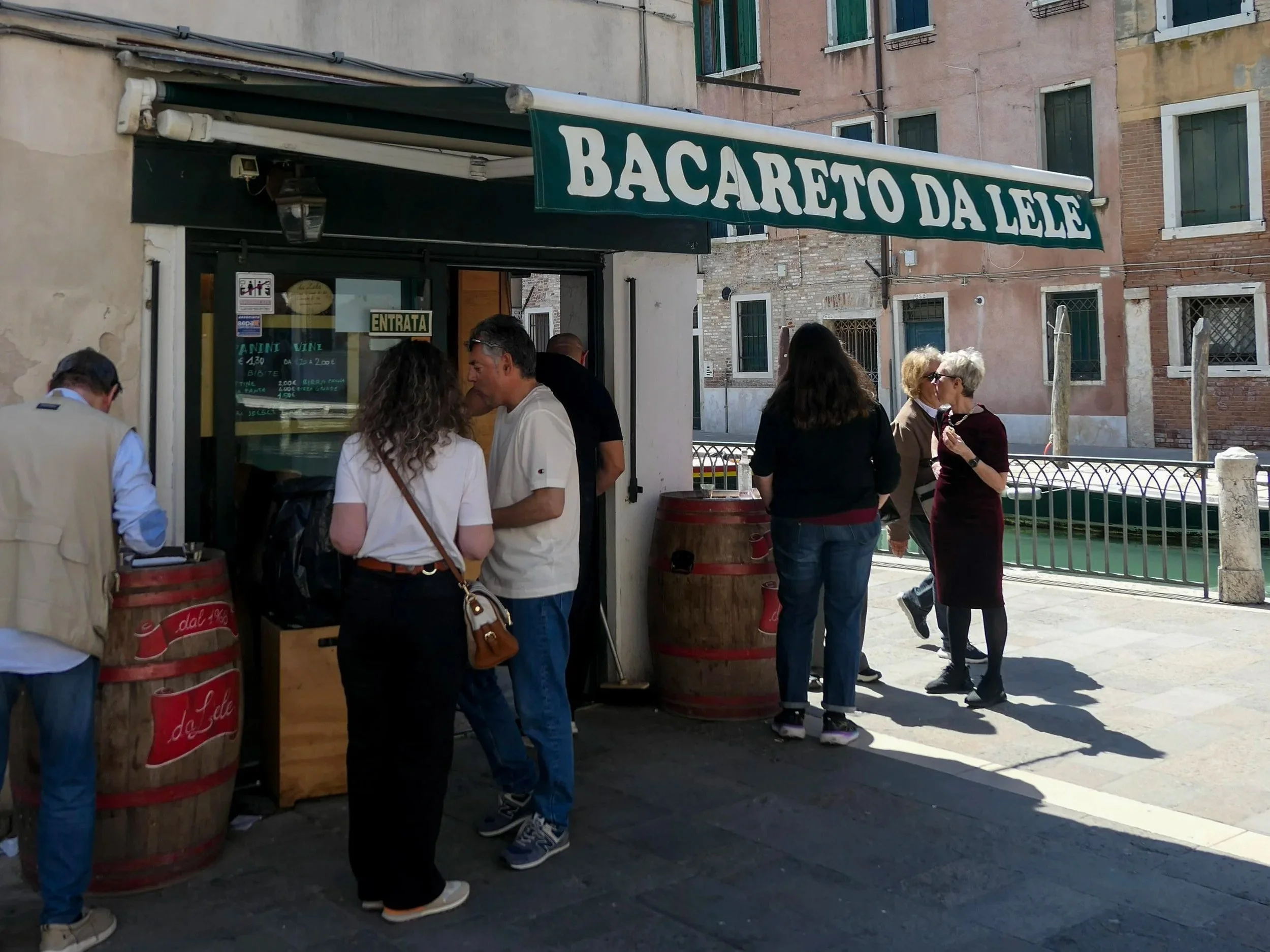Beyond San Marco: 5 Hidden Venice Neighbourhoods
Type “Things to do in Venice” into Google and the algorithm spits back the usual suspects: St. Mark’s Square, Rialto Bridge, Burano, the same roll-call of sights that already groan under the weight of day-trippers in matching sunhats. And yes, if it’s your first time, you must shuffle across Rialto with everyone else and dutifully photograph the Grand Canal as if it might sail away if you didn’t (okay, it might actually sink with the rest of Venice one day). But if you’re a serial returner like me, the kind who can tell a vaporetto Linea 2 from Linea 5 at a glance, the real intrigue lies in the quieter sestieri, the underrated neighbourhoods of Venice. Once you’ve completed the museum lap, it’s time to stop queuing for the obvious and start sniffing out the places where Venetians still do inconvenient things like live, argue and hang their washing. Here’s where to slip off the beaten track and rediscover the soul of Venice.
santa croce
Santa Croce is the bit of Venice everyone marches through without looking up, where the cars and buses stop, the trains spill in, and the wheelie bags clatter their way toward San Marco. On paper it’s the least romantic sestiere, but in reality, it’s the closest Venice gets to ordinary, which, in this city, is quiet extraordinary.
Santa Croce is for students lugging backpacks to lectures and bacari with prices that don’t make you wince. Skip the curated tourist stops and head straight to Bacareto da Lele, where €1 glasses of wine and cicchetti are served with irreverent speed. You’ll be shoulder to shoulder with Venetians grabbing a midday snack, and it’s impossible not to get caught up in the friendly chaos.
If you want a pause from the claustrophobia of Rialto and San Marco, find a bench in the sun or a seat on church steps, sip your wine, and try to catch snippets of the speedy Italian conversations bouncing off the canals.
Dorsoduro
Wander past the Accademia Bridge (take the photo though) then keep going, deeper into Dorsoduro, where students roll their cigarettes with one hand and gesture with the other, and locals with old Venetian nonchalance perch canal-side with plastic cups of ombra. Campo Santa Margherita, my favourite square in Venice, is the neighbourhood’s lung. Skip the fluorescent tourist menus and do what students do by ordering a very affordable spritz in Venice at Caffè Rosso (whilst you rue over spending €14 on the same fluorescent drink in San Marco), then join the sun-drunk crowd sprawled under the trees and wait for a brazen seagull to relieve you of your gelato; do heed the warning signs dotted around the square. When hunger strikes, head to Al Squero, a proper Venetian osteria tucked on a quiet side canal. Here, locals outnumber visitors, the portions are generous and the prices laugh in the face of San Marco inflation, with the added delight of watching gondolas being crafted at Squero San Trovaso across the canal while you eat.
Giudecca
Venice’s secret party trick is that it looks better from Giudecca, the other side of the wide canal crossing that no one really visits, and the side that you must. Hop on Linea 2, disembark at Zitelle as the sun drops, and suddenly the Venice skyline is yours. With San Marco and Dorsoduro glowing amber across the lagoon, the postcard turns inside out.
There’s no checklist here. At some point eat at Altanella, a family-run trattoria that still believes fish should taste of the sea rather than a heavy drowning of garlic butter. Nurse a spritz at La Palanca, sitting so close to the water you could almost stir your drink with it. If you must be decadent, the rooftop at the Skyline Rooftop Bar at the Hilton Molino Stucky Venice offers a view so good you’ll forgive yourself for ordering a €20 cocktail. Some of my most peaceful moments in Venice are on Giudecca.
Cannaregio
Cannaregio is Venice unposed and stripped of pretence. No gloss or dressing up for the tourists, just a working neighbourhood where people actually cook, swear very loudly and eat standing up, which is why the food is better here than anywhere else. Begin at Cantina Do Mori, a bacaro that claims to be the oldest in Venice, though it looks like it’s been patched together every century or so. Then slide into Al Timon, a canal-side favourite where locals balance wine glasses on the hull of a moored gondola. A cicchetti crawl in Canareggio at sundown is the lingua franca, from sardines in saor, meatballs that taste of someone’s nonna’s kitchen and anchovies wobbling on bread. Follow the crowd down Salizada del Spezier and when your feet give in, haul yourself to Ponte delle Guglie, sit, and watch Venice file past in all its uncurated splendour.
Castello
Castello is the largest sestiere, a long, residential sprawl tacked onto the east of San Marco like an afterthought, but spend an afternoon here and you’ll wonder why everyone else stays squashed in the tourist terrarium. Via Garibaldi is the spine of Castello, a rare, wide Venetian street where you can walk two abreast without knocking someone into a canal. Here, you’ll find greengrocers selling artichokes the size of your head but sold with the same deadpan shrug as if they were tins of beans, old men debating loudly and laundry strung across alleys, flapping above. Take a pause in the Giardini della Biennale, where the world’s art elite gather every two years, but on ordinary afternoons you’ll share the shade with pensioners, pigeons and napping students. This is Venice doing what it does best, ignoring its eminence.
Venice doesn’t need you. It has survived plagues, floods, Napoleon and worse tourists than you’ll ever be. But if you want to see it as something other than a queue for gelato and a backdrop for proposals (yes, even mine), step sideways into these lesser-known Venice neighbourhoods.





